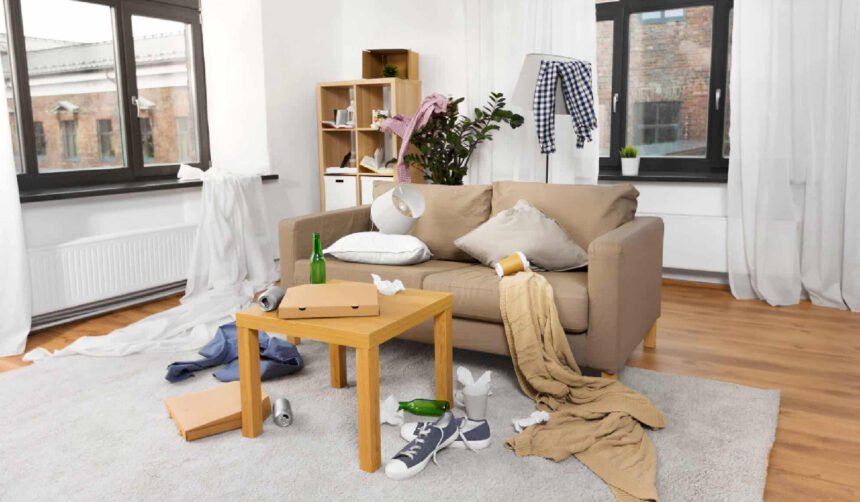A clean and organized living space is more than just a luxury—it’s a necessity for physical health, mental clarity, and overall well-being. While daily or weekly cleaning routines may keep visible surfaces tidy, they often miss the areas where dust, bacteria, and allergens accumulate most. That’s where a more intensive approach becomes essential. To truly transform your home or workspace into a healthy, rejuvenating environment, it’s important to look beyond basic chores and embrace a more thorough strategy that addresses hidden dirt and neglected zones.
This guide explores the importance of going beyond surface-level tidiness, diving into the principles, benefits, and practices of intensive home care. From neglected corners to overlooked appliances, understanding how to tackle grime at its root not only improves hygiene but also extends the life of furnishings, improves indoor air quality, and promotes emotional wellness.
Why Routine Cleaning Isn’t Always Enough
Daily and weekly cleaning routines serve an essential role in keeping our homes livable and organized. Tasks such as sweeping, vacuuming, and wiping down surfaces create a presentable environment and help manage day-to-day dirt. However, over time, areas that aren’t part of the regular routine begin to harbor buildup.
Here’s why surface-level routines fall short:
- Inaccessible Areas: Places behind furniture, under appliances, and inside vents are often missed.
- Accumulation Over Time: Grease, dust, and bacteria accumulate gradually, requiring more than just a quick wipe.
- Misleading Appearance: Surfaces may look clean while harboring hidden germs or mold.
This is why an intensive cleaning approach becomes crucial periodically. It addresses the dirt that’s out of sight but not out of effect.
Key Elements of an Intensive Cleaning Routine
A proper cleaning overhaul involves a strategic process. It’s not just about working harder—it’s about working smarter. Here’s what a comprehensive approach typically includes:
1. High and Low Dusting
Standard dusting usually targets visible areas like countertops or furniture tops. But dust also accumulates in less obvious places:
- Ceiling fans
- Light fixtures
- Top shelves
- Baseboards
- Under beds and couches
High-to-low dusting ensures gravity doesn’t spread dust downward onto freshly cleaned surfaces.
2. Detailed Appliance Care
Appliances are often used daily but rarely cleaned thoroughly. Over time, food particles, grease, and residue build up inside and around these items.
- Refrigerator: Remove shelves, clean interior walls, and defrost if necessary.
- Oven: Degrease racks and scrub baked-on spills.
- Microwave: Clean inside walls and rotating trays.
- Washer/Dryer: Wipe down interiors and lint traps.
This step helps prevent odors, mechanical wear, and the spread of bacteria.
3. Bathroom Sanitization
Bathrooms require more than just a quick wipe. An intensive cleaning plan addresses:
- Grout lines and tiles
- Faucet heads and drains
- Shower doors and curtains
- Behind the toilet
- Vent fans and light fixtures
Using disinfectants in these areas helps remove bacteria, mildew, and mold.
4. Upholstery and Fabric Care
Fabrics trap dust, skin cells, and allergens. Consider steam cleaning or shampooing:
- Sofas and armchairs
- Curtains and drapes
- Carpets and rugs
- Mattresses and mattress covers
Not only does this refresh your space, but it can also extend the life of your furnishings.
5. Decluttering and Organizing
A truly clean space isn’t just free of dirt—it’s free of chaos. Take time to:
- Sort through cabinets, drawers, and closets
- Donate or discard unused items
- Organize items into clearly labeled storage
- Establish zones for function and flow
Decluttering also makes future cleaning efforts faster and easier.
Health Benefits of Going Deeper
The advantages of an intensive cleaning regimen extend beyond aesthetics. A healthier home environment has profound impacts on daily life:
1. Improved Air Quality
Dust, pet dander, and pollen accumulate over time, even in seemingly clean homes. Intensive care helps eliminate these irritants, reducing the risk of allergies and respiratory issues.
2. Reduced Illness
Bacteria and viruses can linger on surfaces for days. Sanitizing often-neglected areas decreases the likelihood of transmission, particularly in bathrooms and kitchens.
3. Better Sleep
A clean environment, especially in the bedroom, can improve sleep quality. A freshly cleaned mattress, crisp linens, and dust-free air promote relaxation and restful sleep.
4. Lower Stress and Anxiety
Psychologically, clutter and mess contribute to cognitive overload. A clean space helps the brain focus, feel calmer, and even enhances mood regulation.
Creating a Schedule That Works
Deep cleaning doesn’t have to happen weekly, but a regular cadence ensures your space stays hygienic and well-maintained.
- Monthly: Focus on one room at a time for thorough cleaning.
- Seasonally: Tackle high-impact areas like windows, appliances, and storage spaces.
- Annually: Schedule large-scale projects like carpet shampooing, garage cleaning, or attic organization.
Divide responsibilities into manageable tasks. Whether you’re living alone or with family, spreading chores over time avoids burnout and ensures consistent upkeep.
Tools and Products That Make a Difference
Having the right equipment is half the battle. Here are essentials that elevate your cleaning efficiency:
- Microfiber cloths: Trap more dust and bacteria than paper towels.
- HEPA-filter vacuums: Capture allergens, ideal for homes with pets.
- Steam cleaners: Disinfect without harsh chemicals, great for tile and fabric.
- Extendable dusters: Perfect for ceiling fans, vents, and corners.
- Natural cleaners: Vinegar, baking soda, and lemon offer non-toxic alternatives.
You don’t need a full arsenal, but investing in quality tools makes each session more effective and less time-consuming.
Eco-Conscious Strategies for a Healthier Home
Modern homeowners are increasingly mindful of the environmental impact of their routines. Sustainable practices can be integrated without sacrificing results:
- Reusable cloths instead of disposable wipes
- Biodegradable cleaners over chemical-based formulas
- Glass or stainless steel bottles for DIY solutions
- Composting organic waste from decluttering efforts
Choosing green methods protects your home’s air quality while contributing to environmental sustainability.
Professional Help: When to Call in the Experts
There are times when calling in professionals is not just convenient but necessary. A certified team brings expertise, high-grade equipment, and a trained eye for detail. Consider expert help if:
- You’re preparing for a big event or sale
- Time constraints prevent thorough cleaning
- There’s mold, pest issues, or deep-set stains
- Moving in or out of a home
Professionals can provide a top-to-bottom reset, after which you can maintain results more easily.
Scheduling a deep cleaning service once or twice a year can significantly improve your home’s condition and provide peace of mind.
Preparing Your Space for an Intensive Clean
Before diving in, a little preparation goes a long way. Set yourself up for success with these steps:
- Declutter first: Remove unnecessary items from floors and surfaces.
- Create a checklist: Break tasks down by room.
- Gather supplies: Ensure everything is accessible before starting.
- Play motivating music: Keeps energy up and makes the process more enjoyable.
- Take before-and-after photos: A visual reminder of progress keeps you motivated.
Starting with a plan helps avoid overwhelm and improves efficiency.
Maintaining the Results
After investing hours into transforming your space, the goal is to keep it looking and feeling fresh. Here’s how:
- Daily 5-minute tidy-ups to reduce buildup
- Weekly refreshes of high-traffic areas
- Monthly resets for bathrooms, bedrooms, and kitchen
- Seasonal check-ins to tackle larger projects
Consistency is key. Establishing routines makes future intensive efforts faster and less demanding.
Conclusion
True cleanliness goes deeper than the visible surface. While basic routines help with day-to-day upkeep, nothing replaces the revitalizing impact of a thorough, strategic deep cleaning. It’s more than just removing dirt—it’s about reclaiming your space, protecting your health, and creating an environment that nurtures both body and mind.
Whether handled personally or through professionals, integrating an intensive cleaning schedule into your home care routine yields significant long-term benefits. From improved air quality and better sleep to a sense of peace and order, the advantages are undeniable.
So the next time your space feels a little off, remember—it may be time for a deep cleaning.
For More Information, Visit Dotmagazine








